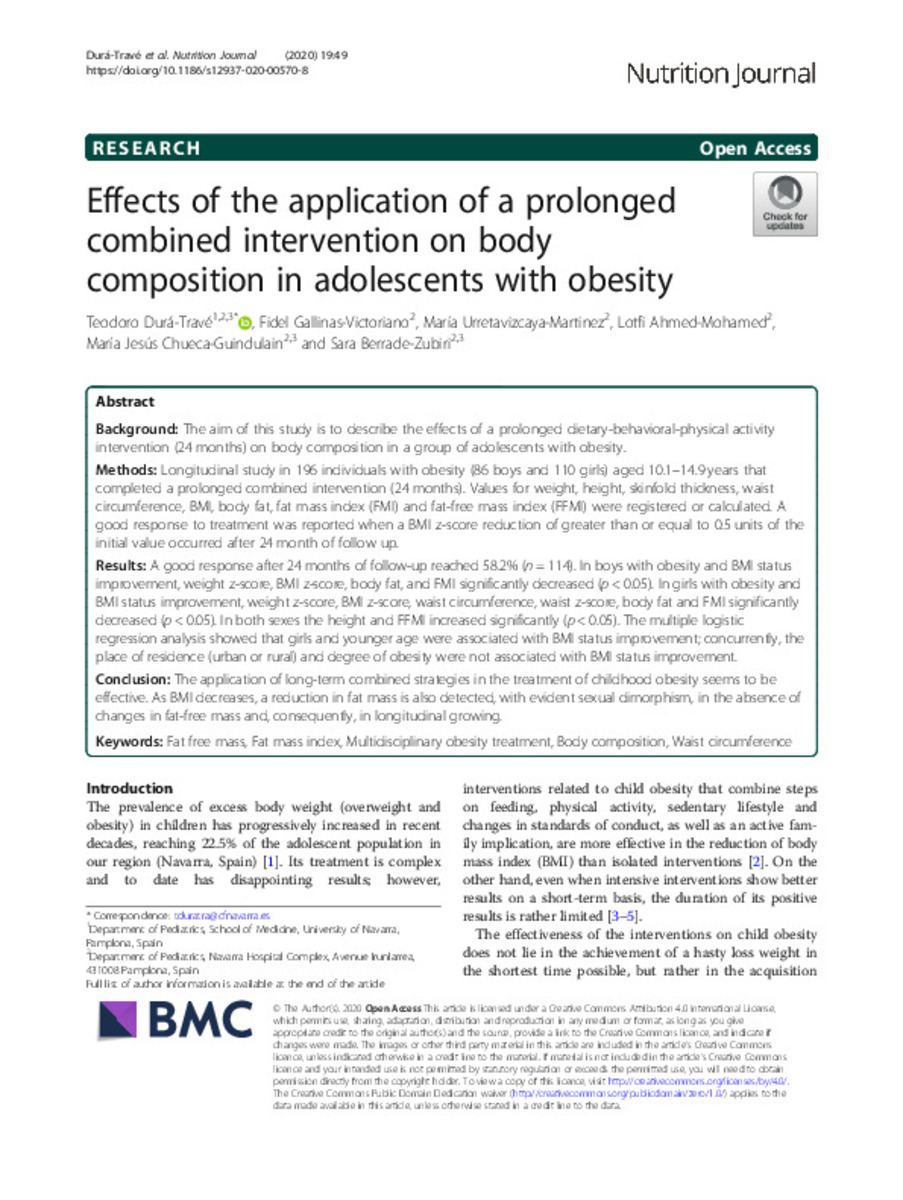Effects of the application of a prolonged combined intervention on body composition in adolescents with obesity
Keywords:
Fat free mass
Fat mass index
Multidisciplinary obesity treatment
Body composition
Waist circumference
Editorial note:
Springer Nature remains neutral with regard to jurisdictional claims in
published maps and institutional affiliations.
Note:
This article is licensed under a Creative Commons Attribution 4.0 International License,
which permits use, sharing, adaptation, distribution and reproduction in any medium or format, as long as you give
appropriate credit to the original author(s) and the source, provide a link to the Creative Commons licence, and indicate if
changes were made. The images or other third party material in this article are included in the article's Creative Commons
licence, unless indicated otherwise in a credit line to the material. If material is not included in the article's Creative Commons
licence and your intended use is not permitted by statutory regulation or exceeds the permitted use, you will need to obtain
permission directly from the copyright holder. To view a copy of this licence, visit http://creativecommons.org/licenses/by/4.0/.
The Creative Commons Public Domain Dedication waiver (http://creativecommons.org/publicdomain/zero/1.0/) applies to the
data made available in this article, unless otherwise stated in a credit line to the data.
Citation:
Durá-Travé, T. (Teodoro); Gallinas-Victoriano, F. (Fidel); Urretavizcaya-Martinez, M, (María); et al. "Effects of the application of a prolonged combined intervention on body composition in adolescents with obesity". Nutrition Journal. 19 (49), 2020,
Statistics and impact
0 citas en

0 citas en

Items in Dadun are protected by copyright, with all rights reserved, unless otherwise indicated.







